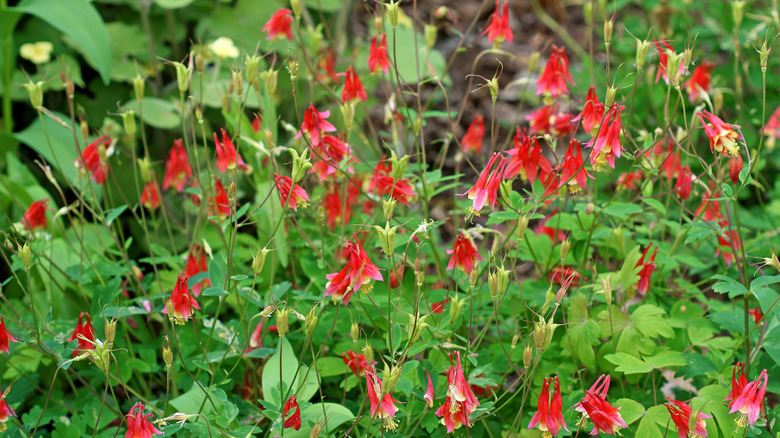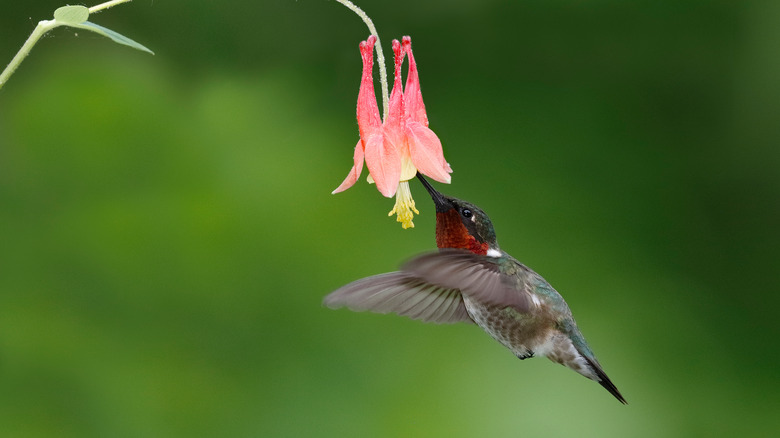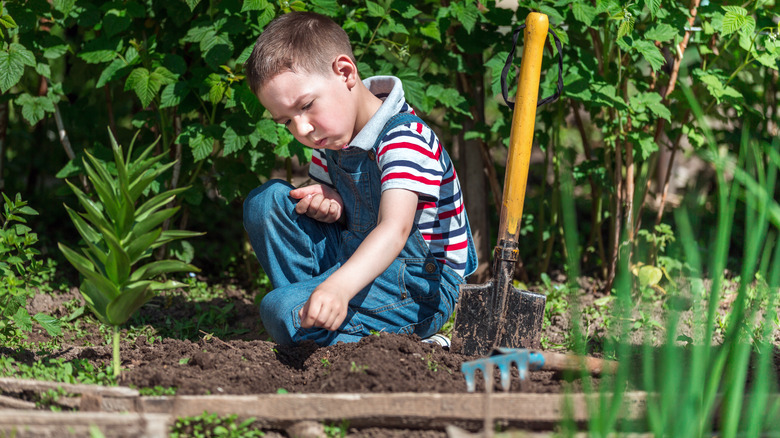Plant Native Columbine To Attract Hummingbirds With One Other Benefit, According To Our Master Gardener
Native red columbine (Aquilegia canadensis L.) grows in fields and roadside ditches throughout the eastern U.S. Also known as eastern columbine, this wildflower grows in a wide range of environments, from Florida through northern Canada. These beautiful plants bloom at the perfect time to support hummingbirds during migration season as they move north. Aside from providing much-needed food for hummingbirds, this plant grows easily in challenging conditions. Since native red columbine is a woodland plant, it can thrive in shady spots and lean soil where it's hard to establish many other blooming plants.
Although red columbine is technically a perennial, the plants usually only live a few years. Luckily, it also freely reseeds in the area in which it was originally planted. As the blooms die back, they produce spiky seed heads filled with tiny black seeds. If the dry stems are left on the plants, those heads pop open, spreading hundreds of seeds, many of which will germinate to produce new plants next year. So, while the parent plant does not live indefinitely, planting red columbine once will reward you with an endless supply of plants for generations. These seeds are also easy to collect and spread anywhere you want to add native red columbine.
Sweet nectar for hummingbirds
Hummingbirds are attracted to red columbine because of its red and yellow blooms, and it's one of the few food sources readily available in early to mid-spring. Each plant provides masses of downward-facing blooms with several tube-shaped petals, perfect for long-tongued feeders like hummingbirds. While there are many cultivated columbines in a variety of stunning colors, this native remains a favorite among beneficial insects and these beloved tiny birds. A combination of native and cultivated varieties provides a stunning spring display of flowers.
Red columbine not only supports migrating hummingbirds, but in many areas, these plants continue to bloom for 4 to 6 weeks. There's a good chance columbine flowers will continue to provide nectar for hummingbirds when they reach their breeding grounds. This native helps bridge the gap from the time hummingbirds start migrating to the point when other early wildflowers, like poppies, begin to bloom. Spring is also the best time to put out your hummingbird feeder, so combining natural and homemade sources of food for these lovely birds can help attract more to your yard.
Add native red columbine to your garden
It is exceptionally easy to grow and care for columbine flowers. Since they are not picky about soil conditions, you can plant them almost anywhere. In northern regions, you can place native red columbine in full sun, but in warmer regions where the summers experience highs of 90 degrees Fahrenheit or more, these plants will grow best in partial shade. Columbine is easy to grow from seed or transplants. If you know someone who has native red columbine in their garden, they probably have some tiny seedlings to share, since these plants are so prolific at self-seeding. You can also often find red columbine at local nurseries and native plant sales.
Once you have selected the location for your columbine, clear the area of grass and weeds and loosen the soil. Sprinkle seeds in late spring or fall for blooms the following year. You can also place columbine plants in the ground in spring or fall for larger plants with more blooms next spring. Simply dig a hole twice the width and depth of the plant's root ball, place it in the ground, and backfill the hole with loose soil until the top of the root ball is even with the soil's surface. Keep the soil consistently moist until the plant is established, which takes about a month. Then water as needed when the soil is dry one inch below the surface.


